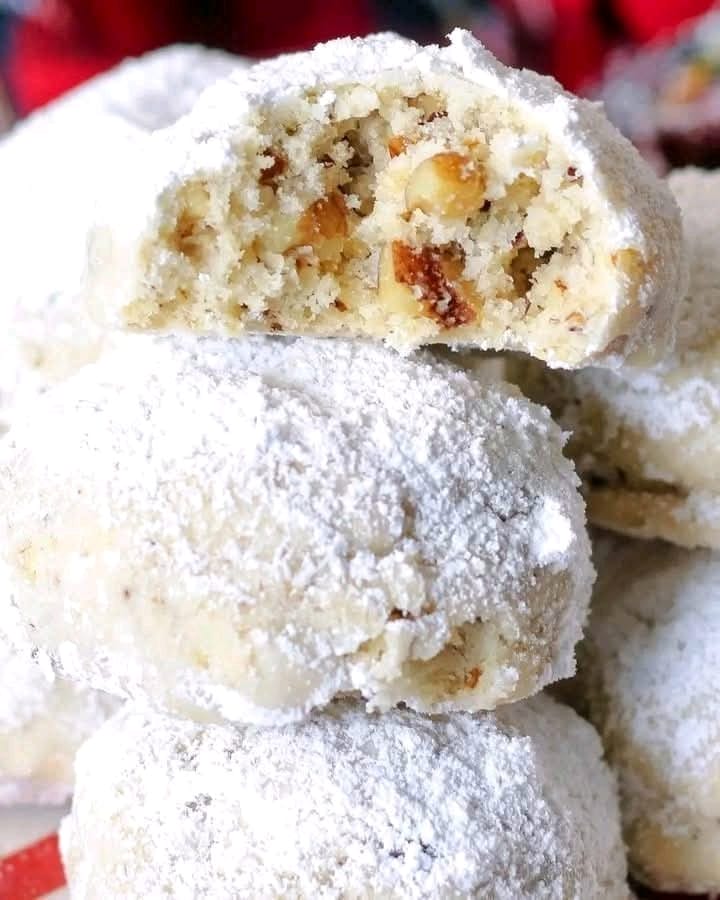Nuts
Finely chopped or ground nuts add both flavor and texture. Walnuts, pecans, almonds, hazelnuts are common choices. The kind of nut changes the flavor profile: walnuts give earthiness, pecans sweeter, hazelnuts more fragrant. Some recipes use finely ground nuts to almost almond‑meal texture.
Sugar / Powdered Sugar
There are two uses of sugar: first inside dough (granulated or sometimes powdered) for sweetness, second as the coating. After baking, while cookies are still warm but set, they are rolled in powdered sugar; after cooling, rolled again. This double coating gives the distinctive snowy look and sweet crust.
Flavorings
Vanilla extract is the most common, sometimes almond extract is used for nutty or aromatic accents. Salt is used in small quantity to balance sweetness. Some recipes may include a tiny pinch of other flavorings (e.g. cinnamon or citrus zest) depending on family tradition.
Other Ingredients / Optional Add‑Ins
Some versions call for a dip in tips such as chilling the dough before baking, or resting the dough. Nut types can vary. Some people crush nuts more coarsely for texture. Some variants may include a small amount of extract like almond to amplify the nut itself.
Texture & Appearance
Russian Tea Balls are characterized by a crumbly, melt‑in‑the‑mouth texture. They should be baked until just set and not browned. Overbaking leads to too much dryness and loss of delicate texture. After baking, the cookies are still warm when first rolled in powdered sugar so that sugar adheres. Cooling allows the cookies to firm up, and then a second roll in powdered sugar gives the signature snowy outer layer.
Flavor profile includes buttery richness, nutty undertone, sweetness from sugar balanced with a small amount of salt or vanilla.
Detailed Recipe – Classic Russian Tea Balls
Yields: about 24‑30 cookies (depending on size)
